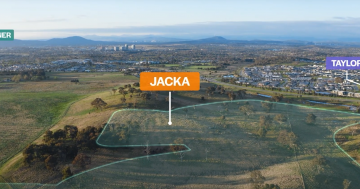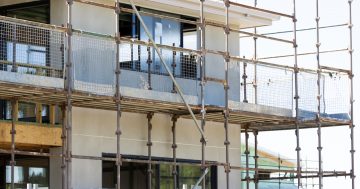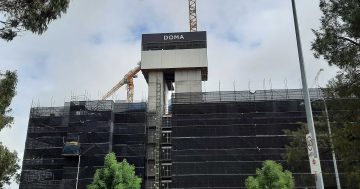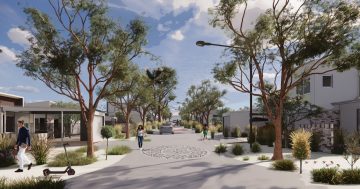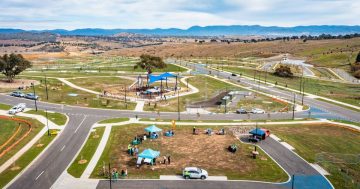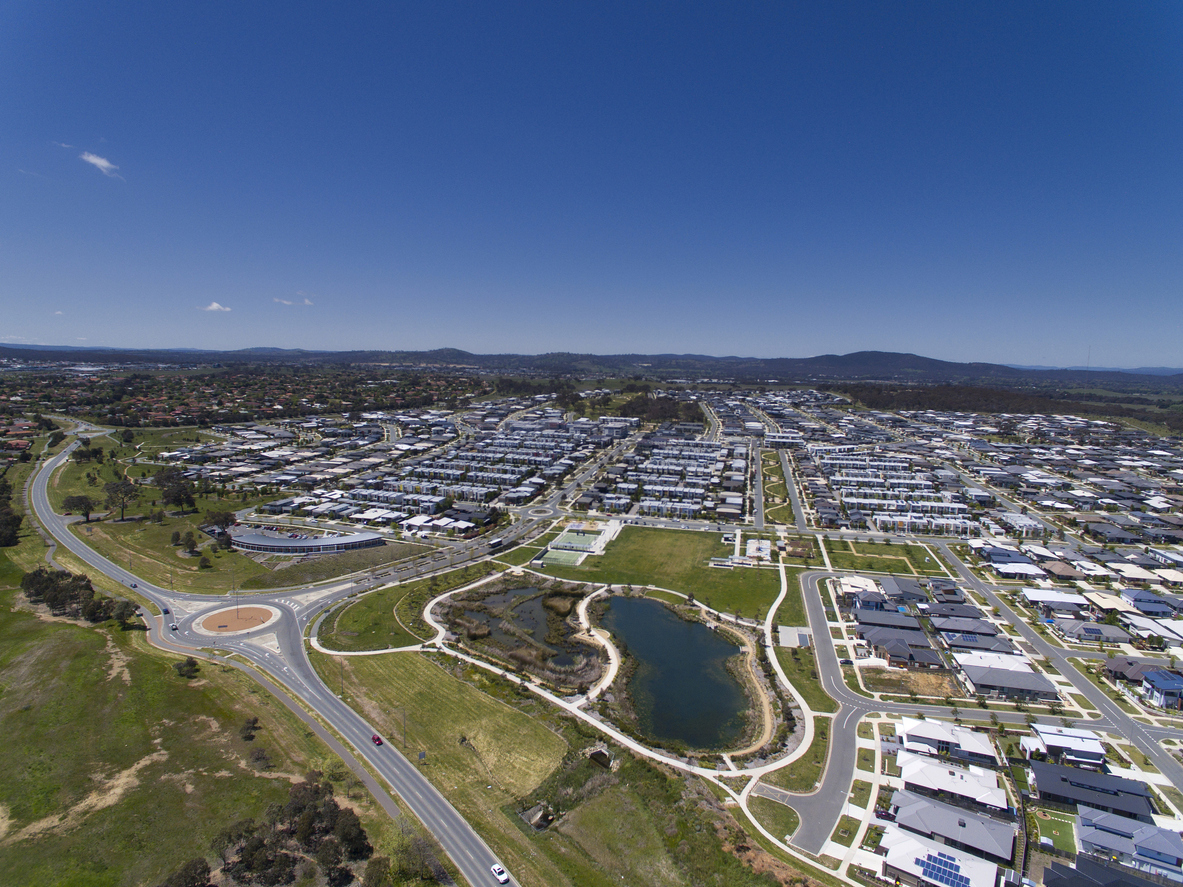
Land supply is a contentious and complex topic in the Territory. Photo: File.
Land, land all around but not a block to build on. Where are you? Canberra.
Or so some say.
The ACT is unique. It’s constrained by tight borders and the release of new land to the market is almost 100 per cent government-controlled.
All of this makes land supply a contentious and complex topic.
It’s also an emotive one, especially as the housing affordability crisis continues because land supply is about more than blocks, it’s about homes.
But not only is endless land supply physically impossible – it’s also limited by economic, environmental and political factors.
The ACT Government says it is planning for an increase of about 30,000 dwellings in the ACT over the next five years to increase the total housing supply in Canberra from 180,000 dwellings to around 210,000.
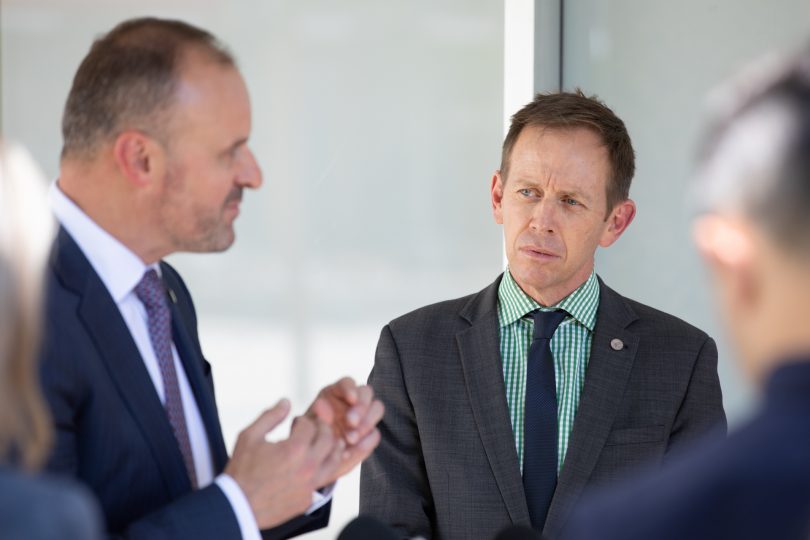
Chief Minister Andrew Barr and ACT Greens leader Shane Rattenbury have set the 70/30 infill agenda. Photo: Michelle Kroll.
The Government’s agenda
The ACT’s Labor-Greens Government is bound to a 70/30 infill agenda.
So while 30 per cent of all new dwellings can be brought onto the market through new greenfield developments, 70 per cent have to be built (somehow) in the ACT’s existing footprint.
Getting there will mean changing zoning and planning regulations to allow higher-density builds in the ‘burbs.
That doesn’t please everyone.
But Chief Minister Andrew Barr has already flagged that infill split should suffice for at least the next decade.
After that, the balance will likely fall even further towards the infill and away from new suburbs.
The Government argues it’s costly to build new suburbs – especially liveable, green, sustainable ones that are well connected to the rest of the city, for several reasons – including the costs of new infrastructure and new services.
What’s left to explore?
Canberra’s north and west are still growing with the Molonglo Valley (Whitlam), Gungahlin (Taylor, Throsby, Jacka, Moncrieff) and the Ginninderry/Parkwood project near West Belconnen.
The latter should – if everything goes to plan – see the ACT’s border moved to incorporate some of NSW.
But that’s complex and unlikely to be a long-term solution to the Territory’s land woes.
The ACT is also home to various pockets of land owned by the Federal Government. Much discussion this year has centred on redeveloping the Commonwealth’s Australian Institute of Sport (AIS) precinct, while the CSIRO land is also a possible option.
Exploration is also happening along the Western Edge (the section stretching from the back of Western Creek and the Molonglo Valley along to Belconnen).
Getting over the Murrumbidgee River is a deep desire of the Territory’s Opposition, and the Master Builders Association (MBA ACT) and the Housing Industry Association (HIA) support a look.
But that’s been repeatedly slammed down by the Government, which says it’s simply too difficult to get the infrastructure and service delivery over there and there are too many environmental concerns, including fire risk.

Under proposed new laws currently being considered by the ACT Government, removing a tree could cost you. Photo: Michelle Kroll.
Environment
The Conservation Council has a pretty firm stance on where it thinks the ACT should look to expand next – nowhere at all.
Executive director Elle Lawless says there’s no need for further expansion beyond the existing footprint of the city.
“Instead, we should be focusing on higher-density living and being more creative with our approach to that … such as duplexes or houses going up instead of out,” she said.
“Making sure we have green space in the suburbs is also important for mental wellbeing and family time.
“We understand that everyone has the right to a home … but maybe they could have a smaller back garden.”
Despite the growing pains facing the ACT, Ms Lawless said there were ways to keep the Bush Capital feeling like it – which included keeping mature native trees alive in the suburbs and ensuring active travel pathways and infrastructure supports journeys that don’t need to be taken in the car.
Infill challenges
Those tree laws propose greater protections for trees and fines for removing them, and are drawing the ire of the housing industry, which says they will only make it harder to develop in established suburbs and add to the red tape.
HIA ACT executive director Greg Weller said the current situation was proof the Government wasn’t doing a good enough job at delivering housing in the existing suburbs, and this needed to be improved if that agenda was to succeed at delivering the housing the growing city needs.
“We’re supportive of the 30 per cent tree canopy coverage but the Government needs to accept that it’s going to have to remove some trees to make that 70 per cent infill happen,” Mr Weller said.
“If we are going to constrain land supply and make it harder and harder to subdivide blocks, there has to be an alternative, otherwise the only option is greenfield.”
Land release
The way land in new suburbs is released and sold in the ACT continues to be of concern to Mr Weller, who said it was not delivering the homes wanted by Canberrans, many of whom still wanted to live in detached houses.
“In the last decade, there’s only been one period where there was actually land available to buy over the counter … one of the impacts of not having this is the inflationary impact on the price,” he explained.
Mr Weller said he was also concerned about the way the system could be gamed and land could be speculated for a profit – and often was – when there was a shortage of available land.
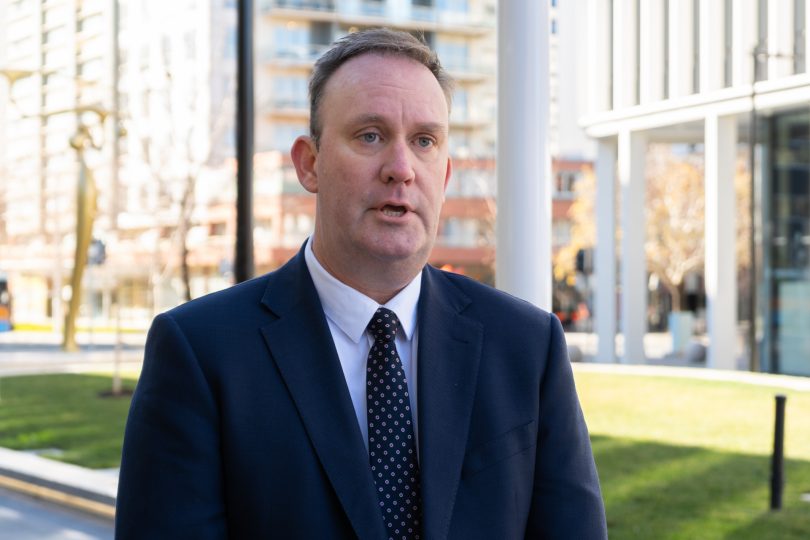
MBA ACT CEO Michael Hopkins said the Government had more levers at its disposal than just land. Photo: Region.
Industry constraints
It’s often argued by the Government that it won’t simply release land willy-nilly as it has to get the infrastructure ready first.
But Mr Weller said it was likely the building boom would slow down soon and material supply would return to normal.
Similarly, Master Builders Association ACT CEO Michael Hopkins said even if that were the case, the Government could help increase the capacity of the industry by boosting funding for apprenticeships, for example.
He also believes that the land release program should be set by what Canberra’s population needs and wants today and in the future – not dictated by Treasury.
Heavily oversubscribed land ballots have been witnessed in recent times.
A spokesperson said the Government was working on planning through the new planning bill, a new draft Territory Plan and draft district strategies, and did spend time and resources modelling demand data.
A housing choice survey is also something the Canberra Liberals have urged.
Like Mr Weller, Mr Hopkins isn’t convinced the Government is moving quickly enough with its infill agenda to keep housing demand sated.
Both rubbish the idea that the ACT has developed all the land it can – but say it’s time to move away from a discussion about expanding out to expanding up.
Mr Weller believed that sort of rhetoric only helped to push the price of new blocks and demand for them even higher.












